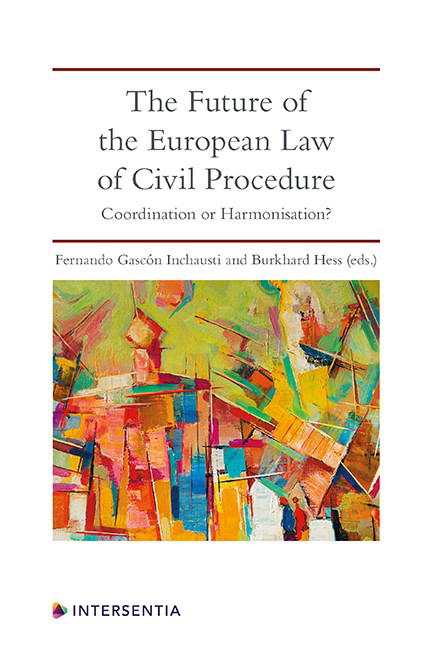Book contents
- Frontmatter
- Contents
- List of Cases
- List of Authors
- Introduction
- PART I METHODOLOGICAL APPROACHES
- PART II THE CURRENT SITUATION: VERTICAL AND HORIZONTAL HARMONISATION
- PART III CURRENT INITIATIVES FOR FURTHER HARMONISATION: The ELI/UNIDROIT Project
- The 2017 Directive Proposal on Common Minimum Standards of Civil Procedure
- Index
- ABOUT THE EDITORS
Harmonisation of Confidential Information Protection in Legal Proceedings: The Trade Secrets Directive
Published online by Cambridge University Press: 23 July 2020
- Frontmatter
- Contents
- List of Cases
- List of Authors
- Introduction
- PART I METHODOLOGICAL APPROACHES
- PART II THE CURRENT SITUATION: VERTICAL AND HORIZONTAL HARMONISATION
- PART III CURRENT INITIATIVES FOR FURTHER HARMONISATION: The ELI/UNIDROIT Project
- The 2017 Directive Proposal on Common Minimum Standards of Civil Procedure
- Index
- ABOUT THE EDITORS
Summary
INTRODUCTION
The Directive 2016/943 (“the Trade Secrets Directive“), has recently contributed to the vertical harmonisation regarding civil procedure in the European Union. This sectoral Directive, aimed at protecting undisclosed know-how and business information against unlawful acquisition, use and disclosure, contains some provisions whose implementation will have an impact on national civil procedures. Amongst these provisions of the Trade Secrets Directive, its Article 9 should be highlighted, as it harmonises the protection of confidential information in the course of legal proceedings. Nevertheless, the vertical nature of this EU rule determines that the measures envisaged for preserving confidentiality will only be applied, in theory, when the protection of a Trade Secret is at stake.
In that sense, it is convenient to respect the following structure in this chapter. First, the concept of trade secrets, for the purposes of the European Union Directive, should be briefly explained. Then, the core of the exposition will be focused on the need for preserving confidential information in the course of trade secrets proceedings, as well as the confidentiality measures required under Article 9 of this Directive – by distinguishing between the measures addressed to those who do not participate in the civil procedure and the measures provided for those who take part in legal proceedings. To conclude, some final remarks concerning the utilisation, the implementation and the application by analogy of these confidentiality measures will be outlined.
THE TRADE SECRETS DEFINITION ACCORDING TO THE EU DIRECTIVE
When it comes to explain the concept of trade secrets, it is easier to offer some examples than trying to set a definition – one of the reasons for this being the lack of a generally accepted definition. For instance, the Coca Cola recipe or Google Search algorithm are amongst the best kept secrets in the world and the most valuable ones. These ideas help us to define trade secrets as any kind of confidential information, which provides its holder with an advantage over their competitors in the marketplace – recipes, algorithms, inventions, processes, etc.
Nowadays, trade secrets have become a very popular way of protecting intangible assets. On the one hand, this is due to the fact that Intellectual Property rights (especially patents and copyrights) have a limited duration, while a trade secret, if correctly kept, could last forever.
- Type
- Chapter
- Information
- The Future of the European Law of Civil ProcedureCoordination or Harmonisation?, pp. 161 - 172Publisher: IntersentiaPrint publication year: 2020



